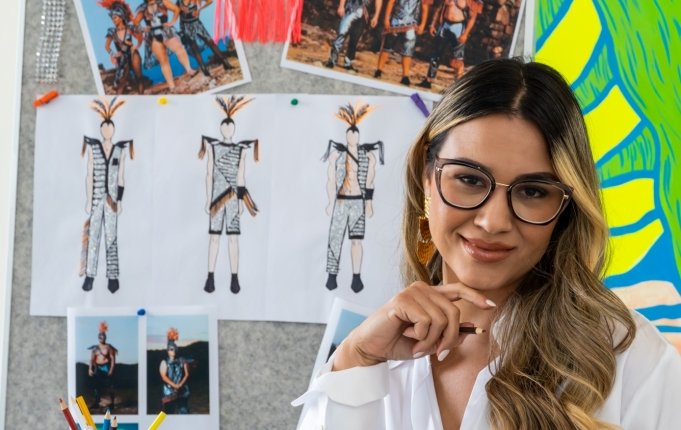The Carnival season is Aruba’s most cherished and festive time of the year, illustrating the boundless creativity, initiative, imagination, and joie de vivre of the Aruban people. Weeks-long celebrations, music competitions, and events culminate with the three biggest parades of the season—the Grand Lighting Parade, the San Nicolas Grand Parade, and the Oranjestad Grand Parade. Many begin their preparations for road pieces and costumes months prior. Backyards and spare rooms are turned into sewing factories, as an incredible investment in time, effort, and money is made by so many.
Magic Mango is proud to highlight Aruba’s local artists and craftspeople, and those that bring the glitz and glamour to the road during the parades are an integral part of our local art scene. In the Magic spotlight is Zilha Wever, costume designer for Empire Carnival Group’s Massa section.

Every Carnival group springboards their road pieces and costumes based on an overall theme, with each section of that group creating their own version of the theme. This year, Empire’s theme is “Festivals,” and the group’s massa section (the massa is a group’s largest section) is representing Nevada’s famous Burning Man festival. Other smaller sections will represent festivals around the world, including Coachella, Ultra, Cherry Blossom, and Tomorrowland festivals.
A group’s theme is often chosen a year or more ahead of time, giving designers and group organizers time to source the fabrics, hardware, feathers, accessories, and gems needed. Zilha actually began working on rough sketches of the Burning Man concept in 2021 in anticipation of Carnival 2022, which was cancelled in respect of safety during the global pandemic. She returned to those rough sketches and sharpened her colored pencils to solidify her designs. “I have immense passion for fashion and try to incorporate that in my designs…I took inspiration from the colors and textures of the desert-scape of the Burning Man location at Black Rock Desert in Nevada, and of course the whimsical and creative fashions that are iconic to this festival,” shares Zilha.

“When I am creating these designs, I have to keep in mind that the costume options need to work for a variety of body types,” explains Zilha, who creates several versions for both women and men to accommodate those that want a more modest style and those that like to show a little more skin.
Zilha, along with Empire’s main organizer and director, Queenie Bergen, traveled to New York City last summer to source the fabrics and materials to bring her vision to life. “This is the part of the process where you need to have some flexibility with your designs…sometimes what you envisioned does not always 100% translate in reality,” she shares. The massa section is generally the most affordable section, so costing out fabrics and other materials can affect the final outcome.
The next step in the process is collaborating with a team of seamstresses who need to complete 300 costumes within a matter of weeks, with each participant being individually measured and fitted for their costume. Meanwhile, another team constructs and decorates 300 headpieces—working day and night for several weeks. Once the participants pick up their costumes and headpieces, they have the opportunity to put their own personal touch by adding extra bling.
Be sure to watch for Empire Carnival Group coming down the road, and give extra cheers for the Burning Man massa!
